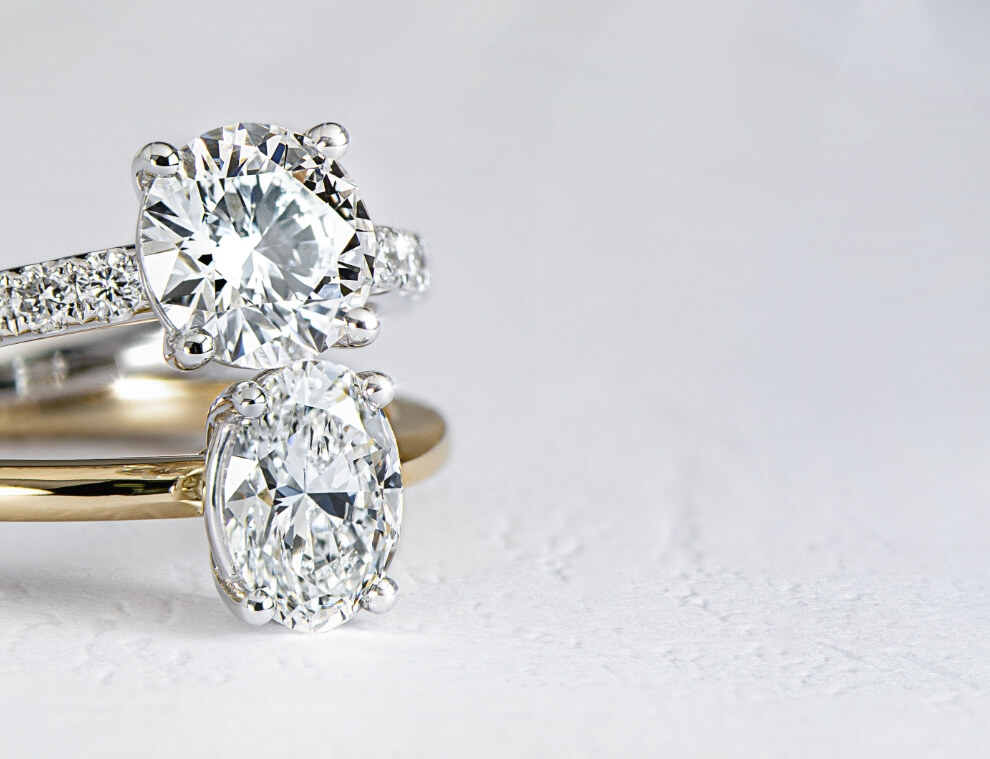Lab Grown Diamonds: A Comprehensive Guide
Table of Contents
Understanding Lab Grown Diamonds
Lab grown diamonds, also known as synthetic diamonds or cultured diamonds, are diamonds that are created in controlled laboratory environments. These diamonds possess the same physical, chemical, and optical properties as natural diamonds, making them indistinguishable to the naked eye. They are crafted using advanced technological processes that replicate the conditions under which natural diamonds form beneath the Earth’s crust.
How Lab Grown Diamonds are Made
There are two primary methods for creating lab grown diamonds: High Pressure High Temperature (HPHT) and Chemical Vapor Deposition (CVD).
High Pressure High Temperature (HPHT)
The HPHT method mimics the natural diamond formation process by using extreme pressure and temperature. A small diamond seed is placed in carbon, subjected to high pressure (approximately 5 GPa), and heated to temperatures of around 1500°C. This environment allows carbon atoms to form around the seed, growing a new diamond.
Chemical Vapor Deposition (CVD)
The CVD process involves placing a diamond seed in a vacuum chamber filled with carbon-rich gases, such as methane. These gases are ionized into plasma, which breaks down and allows carbon atoms to deposit onto the seed, growing layer by layer into a diamond. This method offers greater control over the diamond’s characteristics and can produce high-quality, gem-grade diamonds.
Benefits of Lab Grown Diamonds
Ethical and Environmental Considerations
lab grown diamonds guides are often seen as a more ethical choice compared to natural diamonds. They are conflict-free, meaning they are not associated with mining practices that can exploit workers or fund violence. Additionally, the environmental impact of producing lab grown diamonds is generally lower, as it avoids the extensive land disruption and water usage associated with mining.
Cost-Effectiveness
Lab grown diamonds are typically 20-40% less expensive than their natural counterparts of similar quality. This cost advantage allows consumers to purchase larger or higher-quality diamonds without exceeding their budget.
Quality and Purity
Lab grown diamonds can be manufactured to be nearly flawless and can exhibit fewer inclusions and defects compared to natural diamonds. They are graded by the same standards as natural diamonds, using the Four Cs: cut, color, clarity, and carat weight.
Applications of Lab Grown Diamonds
Jewelry
Lab grown diamonds are increasingly popular in engagement rings, wedding bands, and other fine jewelry. Their affordability and ethical appeal make them an attractive choice for consumers seeking high-quality, beautiful pieces.
Industrial Uses
Beyond jewelry, lab grown diamonds are also used in various industrial applications. Their hardness and thermal conductivity make them ideal for cutting tools, heat sinks, and other applications requiring durable materials.
Debunking Myths About Lab Grown Diamonds
Myth: Lab Grown Diamonds Are Fake
This is a common misconception. Lab grown diamonds are real diamonds, identical to natural diamonds in every way except their origin. They are not to be confused with diamond simulants like cubic zirconia or moissanite, which only mimic the appearance of diamonds.
Myth: Lab Grown Diamonds Lack Value
While it is true that lab grown diamonds may not hold their value as well as natural diamonds over time, their initial affordability and ethical production offer significant value to consumers. The perception of value is evolving as more consumers become aware of the benefits of lab grown diamonds.
Choosing the Right Lab Grown Diamond
When selecting a lab grown diamond, it’s important to consider the same factors as you would with a natural diamond. Here are some key aspects to keep in mind:
Cut
The cut of a diamond affects its brilliance and sparkle. Well-cut lab grown diamonds reflect light beautifully, enhancing their overall appearance. Popular cuts include round, princess, and emerald.
Color
Diamonds are graded on a color scale from D (colorless) to Z (light yellow or brown). Lab grown diamonds are available in a range of colors, with colorless diamonds being the most prized for their purity and rarity.
Clarity
Clarity refers to the presence of inclusions or blemishes within a diamond. Lab grown diamonds generally exhibit higher clarity, with fewer imperfections compared to natural diamonds. Grades range from Flawless (no inclusions visible under 10x magnification) to Included (inclusions visible to the naked eye).
Carat Weight
Carat weight measures the size of the diamond. Lab grown diamonds offer a cost-effective way to achieve larger carat weights without sacrificing quality or breaking the bank.
Certifications and Grading
Just like natural diamonds, lab grown diamonds are graded by reputable organizations such as the Gemological Institute of America (GIA) and the International Gemological Institute (IGI). These certifications provide assurance of the diamond’s quality and characteristics, helping consumers make informed decisions.
Caring for Lab Grown Diamonds
Proper care and maintenance ensure that lab grown diamonds retain their brilliance and beauty over time. Here are some tips for keeping your diamonds in pristine condition:
Regular Cleaning
Clean your lab grown diamonds regularly using a mild solution of soap and warm water. Use a soft-bristled brush to gently scrub away dirt and grime, especially in hard-to-reach areas.
Avoid Harsh Chemicals
Avoid exposing your diamonds to harsh chemicals or abrasive materials, which can damage the stone or setting. Remove your jewelry before engaging in activities that may expose it to such substances.
Professional Inspections
Have your lab grown diamond jewelry inspected by a professional jeweler at least once a year. They can check for loose settings, chips, or other damage and perform necessary repairs to keep your jewelry in top condition.
Conclusion
Lab grown diamonds represent a significant advancement in the diamond industry, offering consumers a compelling alternative to natural diamonds. Their ethical production, affordability, and high quality make them an attractive choice for both jewelry and industrial applications. By understanding the processes involved in creating lab grown diamonds and considering the key factors in their selection, consumers can make informed decisions that align with their values and preferences.



/cloudfront-us-east-1.images.arcpublishing.com/pmn/BOCB3BB6A5GTTLPWUCSS344M2U.jpg)